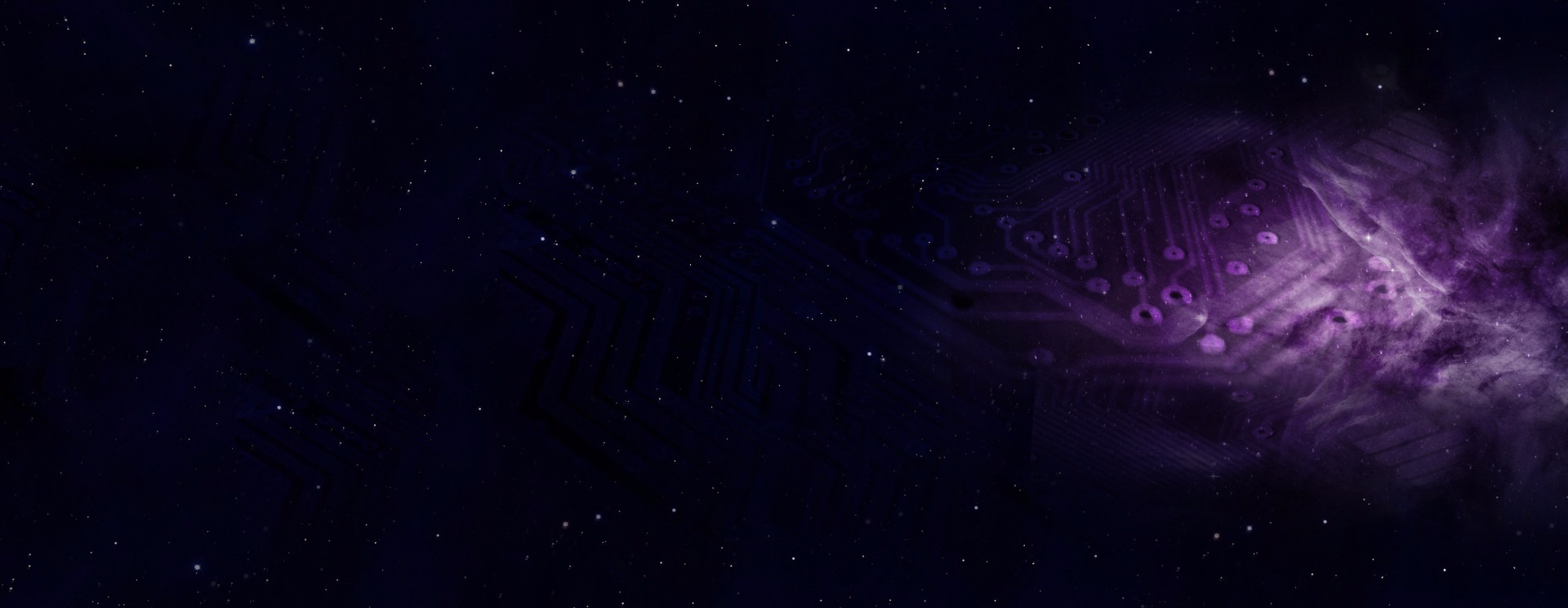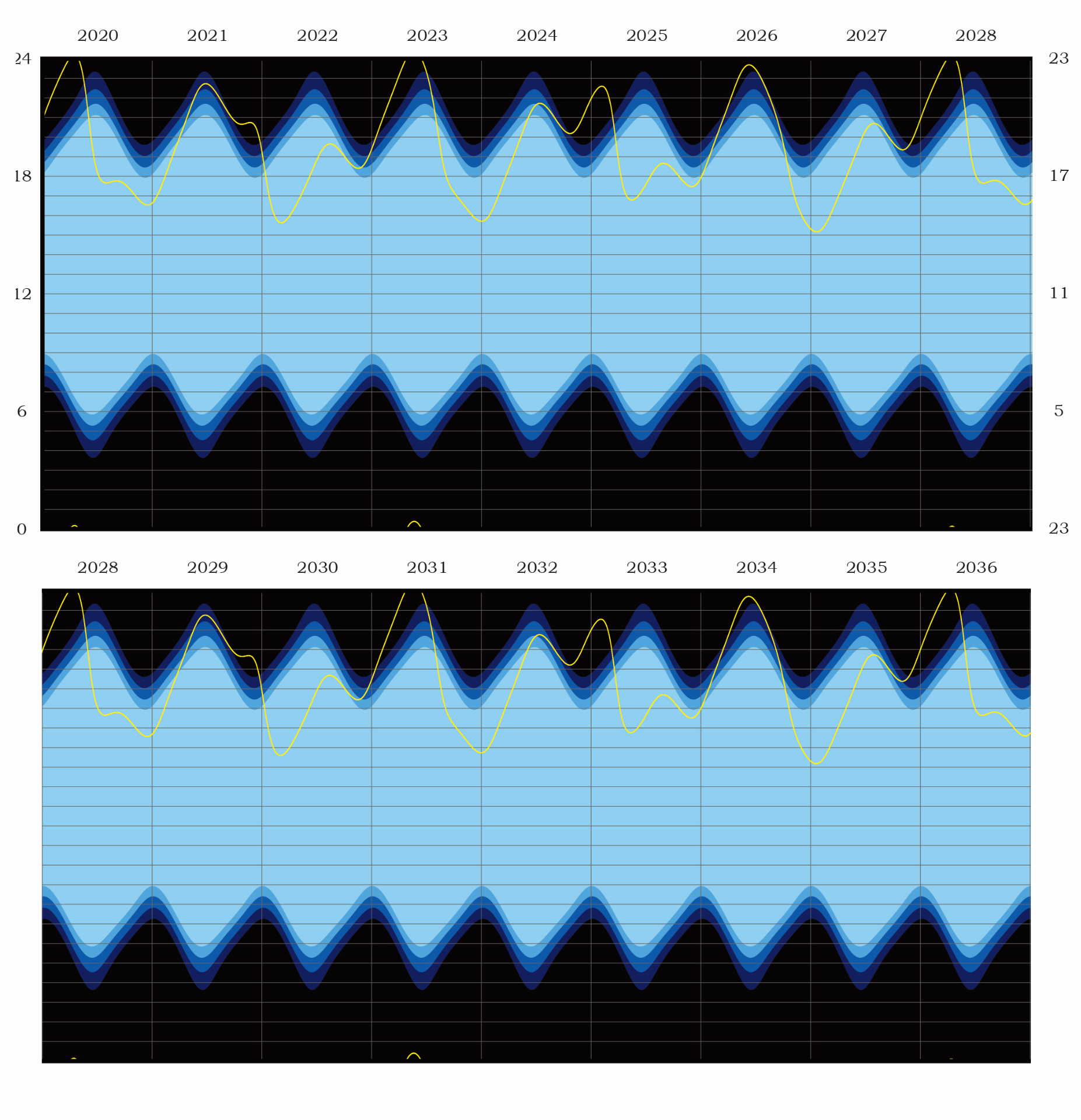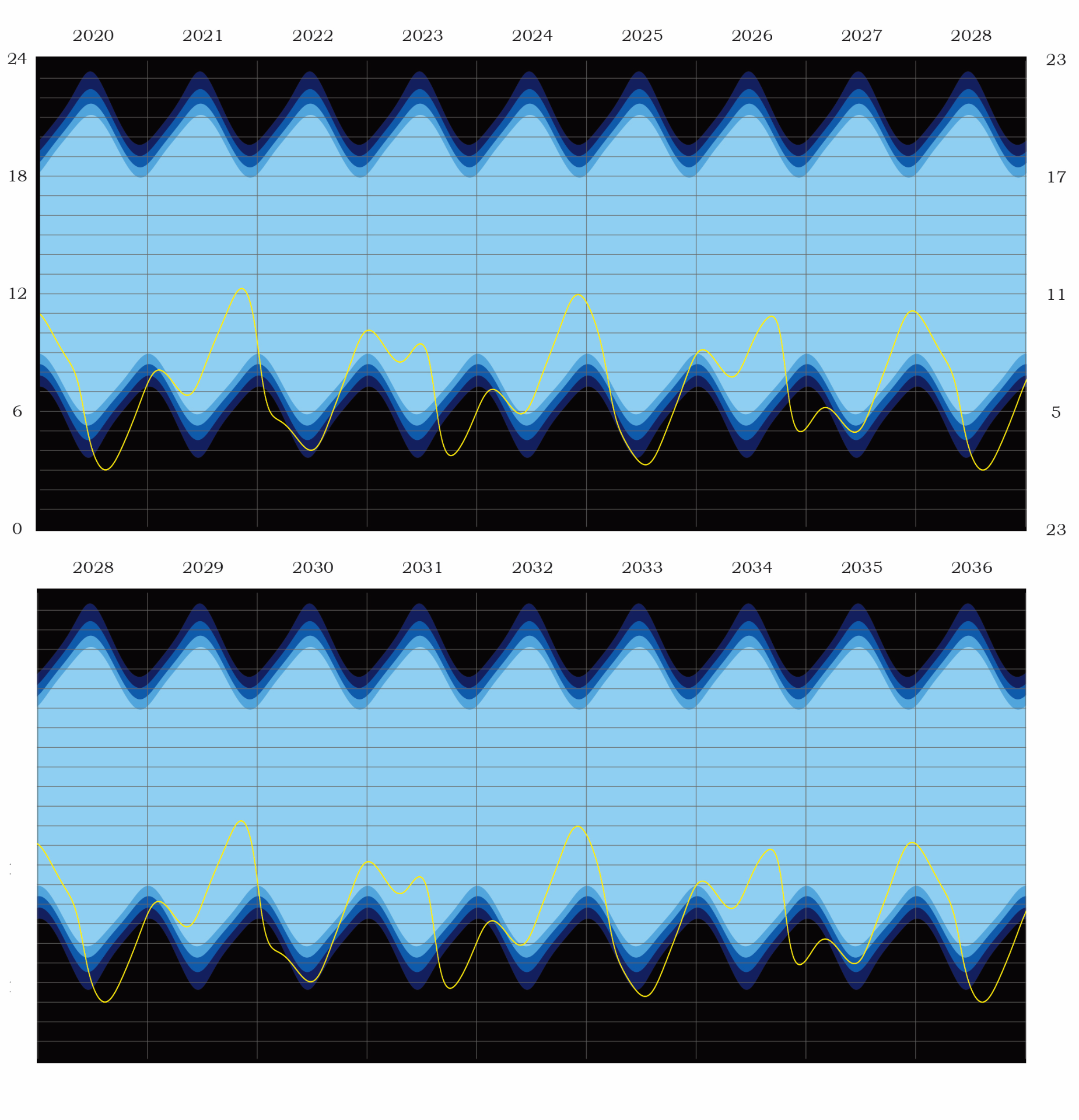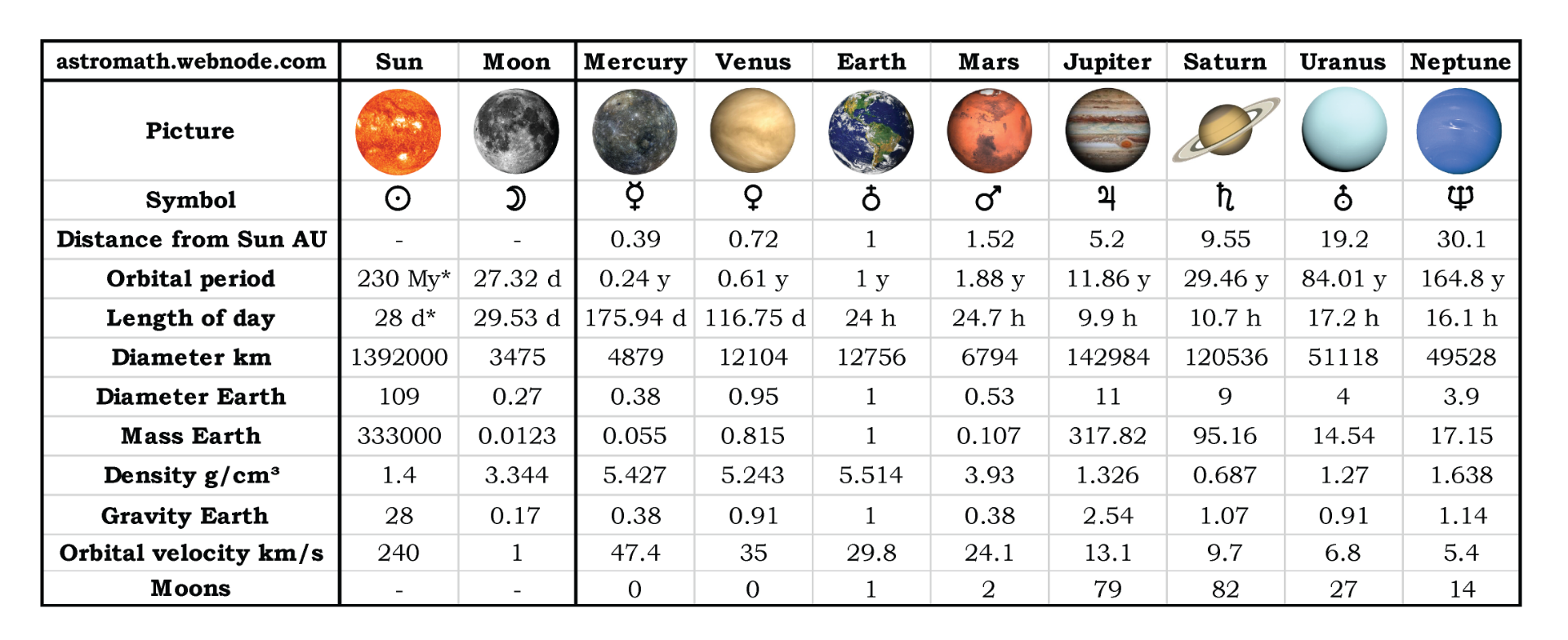
SUPPLEMENTS

Supplements
These supplements display other important data that cannot be included in the calendar. These data are essential for astronomers observing or photographing the planets. The colours representing the planets are the same as in the calendar. The Moon is brown and the Sun is depicted by a thick yellow line. The colours are optimised for printing and also for the PC monitor
Basic facts about main celestial bodies visible from Earth
*The Sun - the table shows the orbital period and velocity of the Sun around the centre of our galaxy and rotation period of the Sun. Orbital period of the Moon is according to the stars and the day length on the Moon is equal to its rotation period according to the Sun.

Bulgaria
Mars setting time - There is a special 15 year cycle of Mars setting time standstill on the evening sky. During this standstill, Mars setting time is nearly the same for 6 months. Similar phenomenon is observable in two years but on a later evening sky. This one is the most notable one as it is observable on the black sky and everybody can see bright red Mars in the southern evening sky. In 13 years, the cycle starts over. This phenomenon is caused by alignment of the orbits of Earth and Mars, and by declination of Mars. When the phenomenon starts, declination of Mars is at its most negative and then, its declination is steadily increasing for six months. As soon as its declination starts to decrease again, the phenomenon ends. The last standstill occurred in the winter 2016/2017 and the next one will occur in the winter 2029/2030 and 2031/2032.
This calendar shows the rising and setting times of all the planets. Use it to roughly forecast conjunctions on the morning and evening sky. When the lines in the calendar intersect, the planets are rising / setting at the same time and therefore, they are relatively close to each other, even near a conjunction. Use any free sky simulator software to see a detailed appearance of any conjunction. (For exact conjunction dates, use "Planetary and Lunar Elongations".)

Slovakia
Czechia

Planetary and Lunar Elongations and Conjunctions
Valid worldwide
Ecliptical elongation is an angular distance of an object from the Sun measured on the ecliptic. When the planets intersect on this graph, an exact conjunction occurs. Conjunction is the smallest angular distance between two objects on the sky regardless of the direction. In extremely rare cases, closer planet can pass in front of another planet. This event is called occultation or transit. For example, Venus can occult Mercury, or Mars can transit in front of Jupiter.
Planetary conjunctions in 2023
22.I.2023 - Venus and Saturn 0°21' (Evening 22.I. and 23.I. also the Moon)
15.II.2023 - Venus and Neptune 0°01' (Evening)
2.III.2023 - Mercury and Saturn 0°55' (Not observable)
2.III.2023 - Venus and Jupiter 0°32' (Evening 1.III. and 2.III.)
31.III.2023 - Venus and Uranus 1°17' (Evening 30.III. and 31.III.)
4.VI.2023 - Mercury and Uranus 2°54' (Morning - difficult)
18.VII.2023 - Evening Moon, Mercury, Venus and Mars
26.VII.2023 - Mercury and Venus 5°17' (Evening - difficult)
Occultations of M45 Pleiades by the Moon
Elongations of Venus
The orbital periods of planets Venus and Earth are nearly in resonance 13 : 8. Venus completes 13 orbits in 2921.11 days and the Earth completes 8 orbits in 2921.92 days. This doesn't qualify for a resonance, however from the point of view of one human lifetime, the elongations of Venus appear to repeat nearly exactly in an 8 year cycle. During a human lifetime, all the elongations of Venus repeat after 8 years nearly exactly. One example is the conjunction of Venus and Pleiades (M45) once in 8 years where Venus passes through Pleiades. This conjunctions will be occurring only during the 21st century and then it will stop and start again in two centuries. In the meantime, Venus will be passing South of Pleiades.

Venus in the evening

Venus in the morning
Lunar Standstills
Valid worldwide
Lunar standstills represent the highest and lowest values of the range of lunar declination during one orbit of the Moon around the Earth. The lowest range is called a minor standstill and the highest range is called a major standstill. This cycle is 18.6 years long and it is caused by precession of the lunar nodes. Therefore, there is a gap of 9.3 years between minor and major standstill. A monthly lunar standstill is the largest lunar declination (±) during one orbit of the Moon. There can be up to three standstills in one month. The graph below is composed of monthly standstills. The lunar orbit is inclined 5.14° to the ecliptic therefore, a minor lunar standstill occurs when Moon's declination reaches ±18.134° and a major lunar standstill occurs when Moon's declination reaches ±28.725°. The small wobble, the 6 month cycle, is caused by gravitational pull of the Sun. During a major lunar standstill, the Moon has the highest positive declination during the winter full Moons and also highest negative declination during the summer full Moons. Therefore, visibility of the full Moon is better in the winter months and worse in the summer. However, during a minor standstill, the situation is opposite. Visibility of the full Moon is relatively worse in the winter months and best during the summer months. Note: due to the very long nights in the winter, the conditions for observation of full Moon are still good even during a minor standstill. For example, we have to compare December 2024 to December 2033 - during a full Moon, there will be 2h15m more moonlight in 2024 as opposed to 2033. Similarly, when we compare 11th of June 2025 to 1st of July 2034 - during a full Moon, there will be 2h10m less light in 2025 than in 2034.

